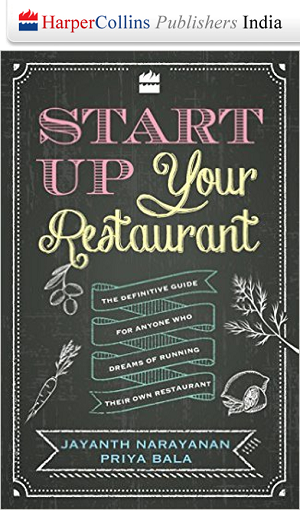
There is this three-month-old restaurant on a busy high street in Bangalore’s upmarket Indiranagar. It was 8 pm on a Thursday when I walked in; it was utterly and desolately empty.
Why does a restaurant fail to fill up even a few of its many tables? What happens to customers who walk into the place? I can imagine the heartache and worry it must cause the restaurant owner. Yet, even as a mere observer, I could see so many fundamental mistakes this business was making.
Location: Sure, it occupies prime real estate and rubs shoulders with upmarket brands, but this new restaurant doesn’t enjoy a lot of visibility. First floor locations often don’t work for new restaurants, particularly for unfamiliar brands. In this case, the entrance from a side path compounds the problem. A bright neon sign just doesn’t do enough.
Size: The restaurant has 100-plus covers. That’s ambitious and it’s always going to be difficult to fill up the place. Especially in the current market scenario, where the online food delivery startups have dramatically changed customer preferences. Customers seem increasingly more inclined to simply order in food rather than take the trouble to drive, park and dine at a restaurant. With the deals and offers thrown in by the food aggregators, even people who would otherwise dine out are ordering in. In this scenario, I’m increasingly convinced that even restaurants based on brilliant concepts, forget the run-of-the-mill ones, should confine themselves to 50- to 60-covers. That brings me to the next point: concept.
Concept: In our book Start Up Your Restaurant (HarperCollins 2016) we devoted several pages emphasizing the importance of clarity of concept. The restaurant must emerge from a clear concept and the restaurateur must display a laser-sharp focus in arriving at it. Unclear concepts confuse the market and are unlikely to attract customers. In this case, it was an Indian restaurant, attempting also to serve up innovations on the theme. It wasn’t a modern Indian restaurant, mind you – and they seem again to be the flavour of the season. This one was caught between being edgy and sticking to the conventional. To compound the confusion, there was also an Asian selection.
Food quality: This is a vicious cycle. No customers means leftover food or mise en place that is held in storage too long. Of course, that affects what goes on the plate. If you don’t put out great food, especially when you are new on the scene, it’s going to be hard to pull in diners.
Bar: In buzzy Indiranagar, where there are bars aplenty, it’s going to be difficult to run a restaurant that doesn’t serve alcohol. If the idea is to attract the mocktail-drinking family crowd, the food will have to be unique and special. Even then, filling up a 100-seater would be a challenge.
Numbers: You don’t have to be a finance wizard to deduce that high rentals in this location for a particularly large space means that breaking even, forget making profits is going to be an uphill task.
Reviews: On Zomato, the first page reviews for this restaurant all give it five stars. From my experience of dining here it seemed like a hugely inflated rating. It might, in fact, have a deleterious effect; diners who go with high expectations might go away more disgruntled than if they went hoping for an averagely good meal.
While I’ve examined one particular restaurant, we see these basic errors of judgement being made by many first-time restaurateurs. Blame it on over-enthusiasm or a lack of a real understanding of this frequently tricky business. That is what accounts for the alarming shut-down rate of new restaurants in our cities.










